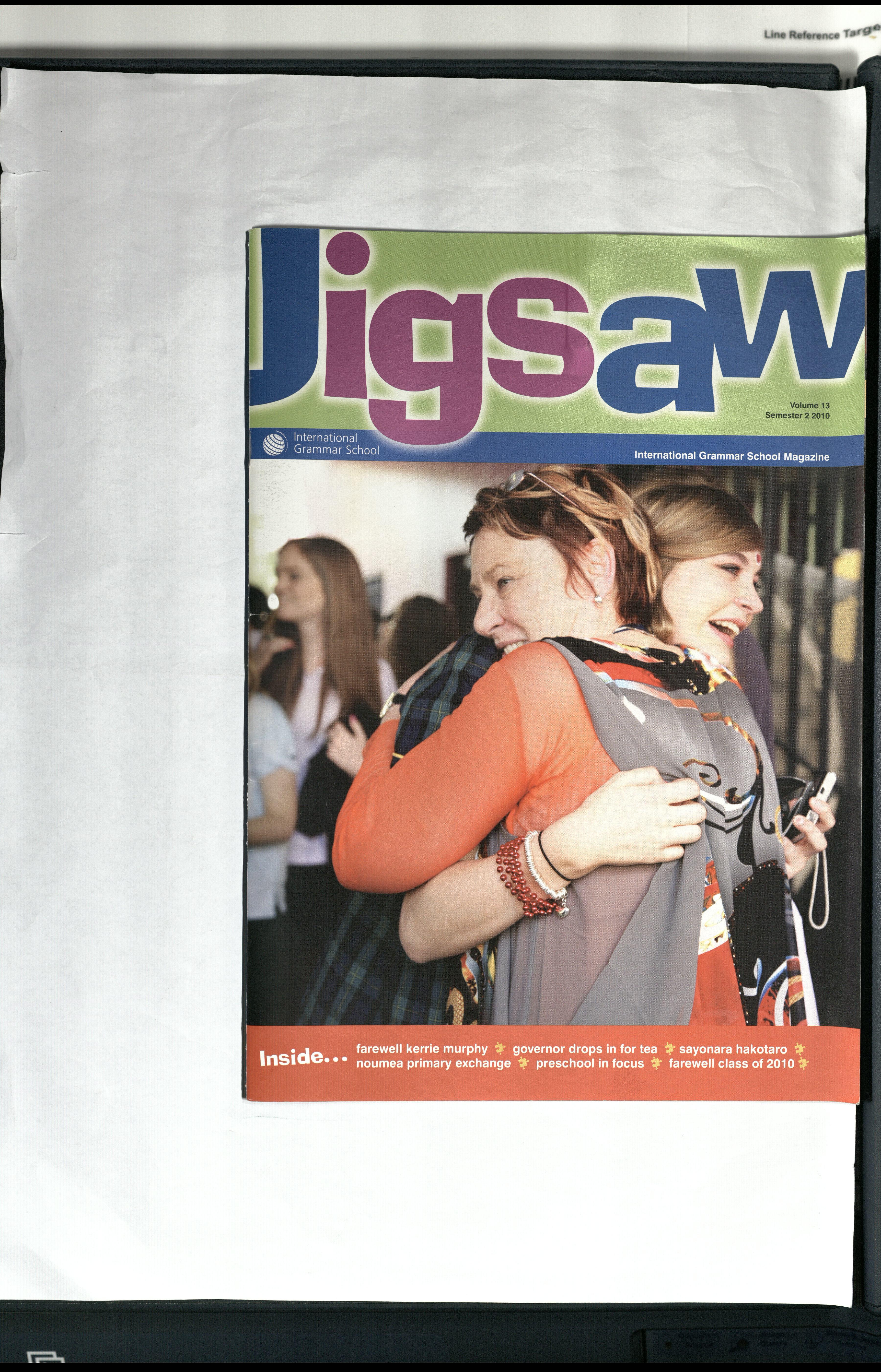
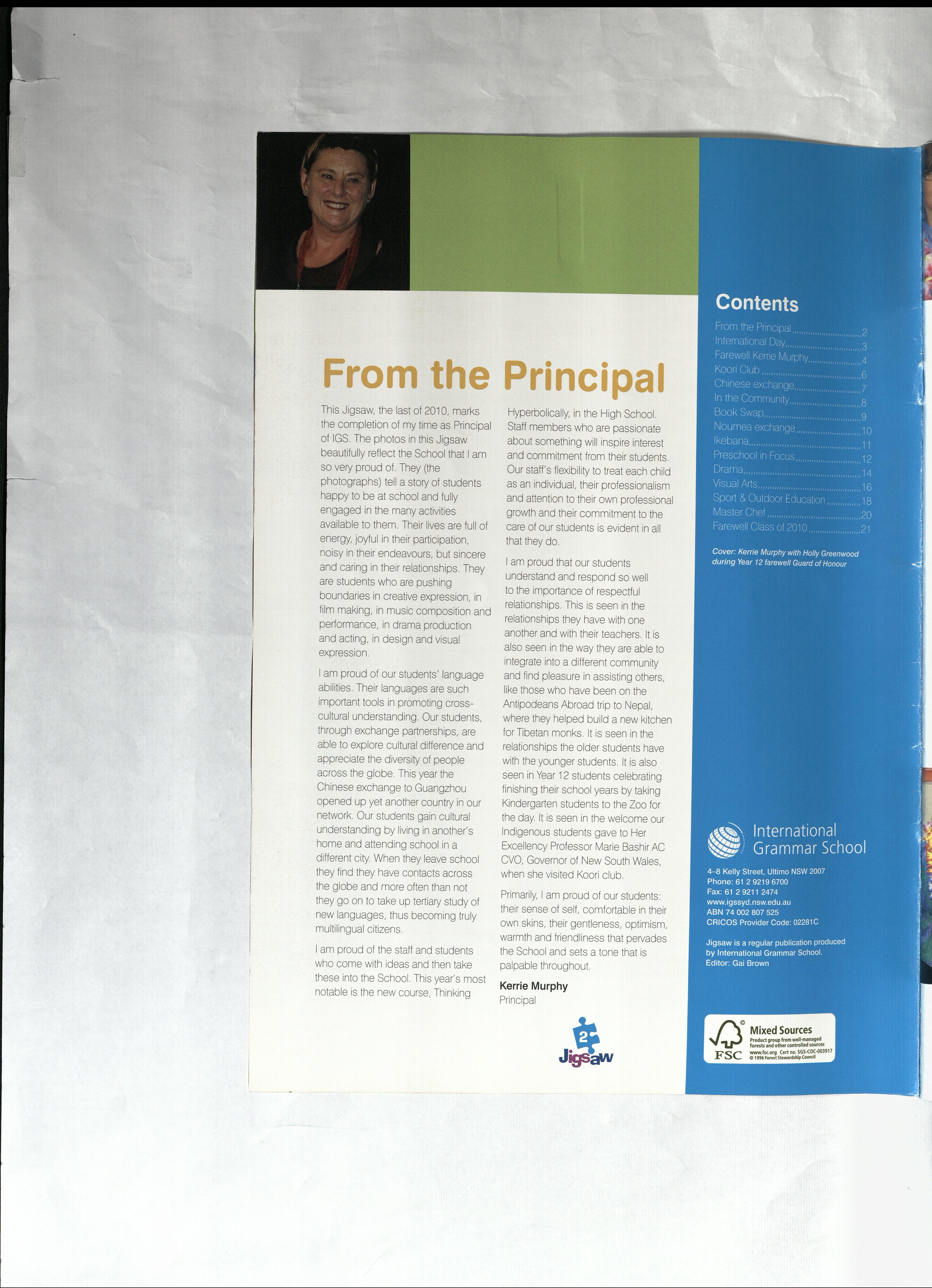



This Jigsaw, the last of 2010, marks the completion of my time as Principal of IGS. The photos in this Jigsaw beautifully reflect the School that I am so very proud of. They (the photographs) tell a story of students happy to be at school and fully engaged in the many activities available to them. Their lives are full of energy, joyful in their participation, noisy in their endeavours, but sincere and caring in the ir relationships. They are students who are pushing boundaries in creative expression, in film making, in music composition and performance, in drama production and acting, in design and visual expression
I am proud of our students' language abilities. Their languages are such importan t tools in promoting crosscultural u'lderstanding. Our students, through exchange partnerships, are able to explore cultural difference and appreciate the diversity of people across the globe This year the Chinese exchange to Guangzhou opened up yet another country in our network Our students gain cultural understanding by living in another's home and attending school in a different city When they leave school they find they have contacts across the globe and more often than not they go on to take up tertiary study of new languages, thus becoming truly multilingual citizens.
I am proud of the staff and students who come with ideas and then take these into the School. This year's most notable is the new course, Thinking
Hyperbolically, in the High School. Staff members who are passionate about something will inspire interest and commitment from their students. Our staff's flexibi lity to treat each child as an individual, their professionalism and attention to their own professional growth and their commitment to the care of our students is evident in all that they do.
I am proud that our students understand and respond so well to the importance of respectful relationships. This is seen in the relationships they have with one another and with their teachers. It is also seen in the way they are able to integrate into a different community and find pleasure in assisting others, like those who have been on the Antipodeans Abroad trip to Nepal, where they helped build a new kitchen for Tibetan monks. It is seen in the relationships the older students have with the younger students. It is also seen in Year 12 students celebrating finishing their school years by taking Kindergarten students to the Zoo for the day It is seen in the welcome our Indigenous students gave to Her Excellency Professor Marie Bashir AC CVO, Governor of New South Wales, when she visited Koori club.
Primarily, I am proud of our students: their sense of self, comfortable in their own skins, their gentleness, optimism, warmth and friendliness that pervades the School and sets a tone that is palpable throughout.
Kerrie Murphy Principal
This year IGS clocked up 12 years of happy living in the Kelly Street building and five years in Mountain Street and like most growing families, we decided that it was time to build and expand. IGS thus began an exciting new development which will deliver an innovative, progressive and sustainable four-storey building to house the Junior School Library and a multipurpose hall. This project with its stunning design by architectural firm Allen, Jack and Cottier (AJ+C) was the inspiration for this year's International
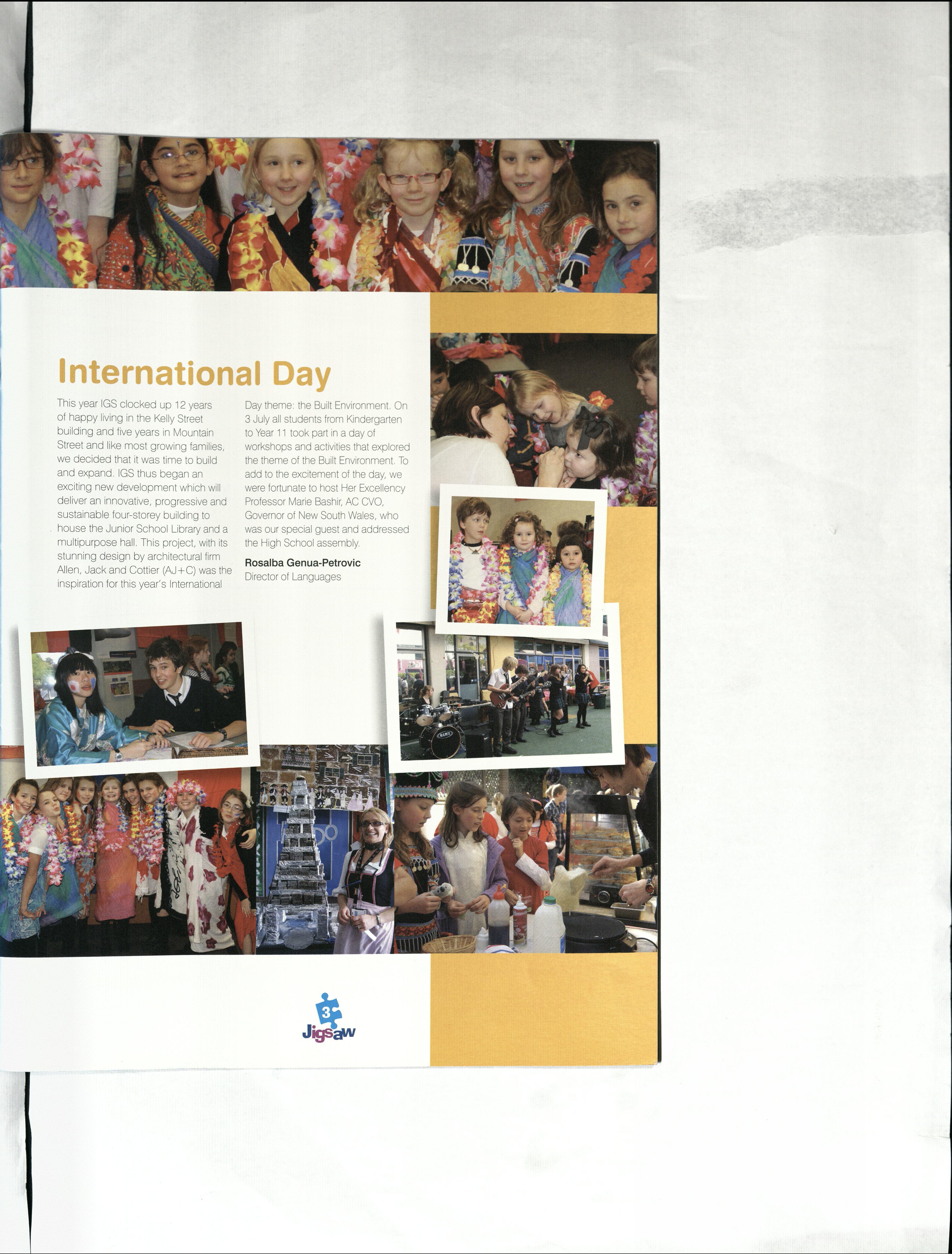
Day theme: the Built En vironment. On 3 July all students from Kindergarten to Year 11 took part in a day of workshops and activities that explored the theme of the Built Environment. To add to the excitement of the day, we were fortunate to host Her Excellency Professor Marie Bashir, AC CVO, Governor of New South Wales, who was our special guest and addressed the High School assembly.
Rosalba Genua-Petrovic Director of Languages


In August, our Indigenous students were delighted to host Her Excellency Professor Marie Bashir, AC CVO, Governor of New South Wales. Her Excellency joined the students in the Junior Library for morning tea and talked with them students about their
families' traditional areas and history, their own aspirations for the future and what they most enjoy doing right now. She was particularly pleased to see the examples of their work they brought along especially for the occasion and took the time to read and discuss the stories and special items. She suggested the students might each bring a friend and visit her at Government House one day.

The newest ambassador for the International Grammar School Indigenous Scholarship Fund, Professor Larissa Behrendt, recently visited the Koori Club along with Board Chair David Baker, Board Deputy Chair Larissa Cook and IGS Parent and CEO of Tranby Aboriginal College , Kristy Masella.
Larissa is a Eualeyai/Kamillaroi woman. She is the Professor of Law and Director of Research at the Jumbunna Indigenous House of Learning at the University of Technology, Sydney. She is admitted to the Supreme Court of the ACT and NSW as a barrister and is appointed to several board including those of the Museum of Contemporary Art , Tranby Aboriginal College and Bangarra Dance Theatre. Larissa is the author of several books on Indigenous legal issues including Home and Legacy She was named as 2009 NAIDOC Person of the Year
This year, after many months of preparation, IGS launched its first exchange partnership with the Guangzhou Yuexiu Foreign Language School in China. The highlight of the program for our students was without a doubt their visit to China in September.
Rosalba Genua-Petrovic Director of Languages
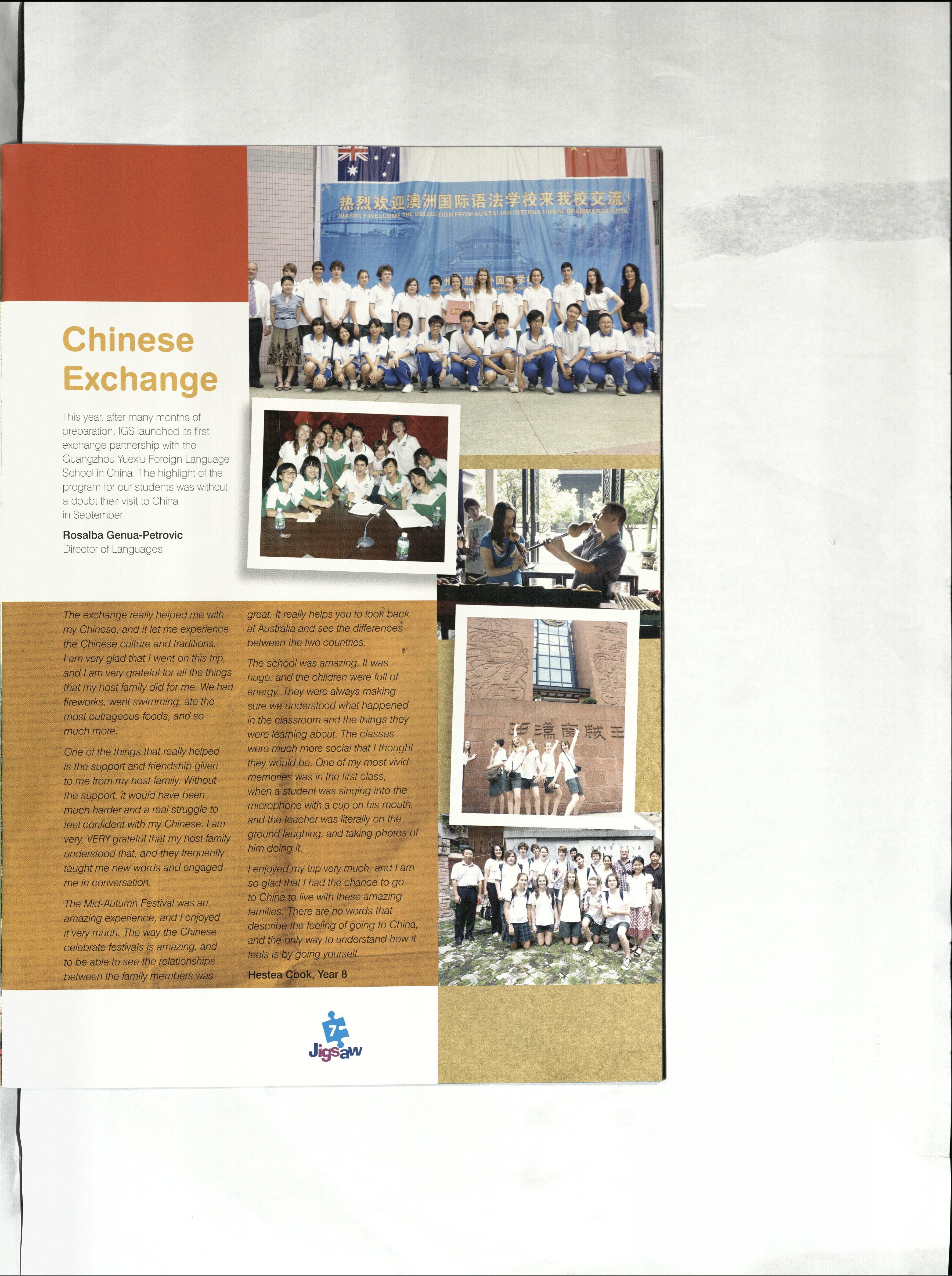
The' exthange really helped me with my Chinese1and it let me eX{Jetfence the ((roaese culture and traditions.
#am vety glad that I went on this trip , .ana I am veiY grateful tor all the things that my host family did tor me. We had fireworks , went swimming, ate the most outrageous foods, and so much more.
One of the things that really helped is the support and friendship gNen to me from my host family. Without the support, it would have been much harder and a real struggle to feel confident with my Chinese. I am vety, VERY grateful that my host family understood that, and they frequently taught me new words and engaged me in conversation.
The Mid-Autumn Festival was an amazing experience, and I enjoye(f it veiY much. The way the Chinese celebrate festivals ffi amazing, and to be able to see tf'le between the
great. It really helps you to look back at AustraliEJ and see the differences between the two countries. ,.
The scfi6,<}1 was amazing. It was huge, and the children were full of energy. They were always making sure Wf!41nderstood what happened in the & room and the things they ll!l!!!l:"" ;,,., about. The classes more social that I thought
was singing into the with a cup on his mouth, was literally on the and taking
trip veiY much; and I am I had the cf!iu7ce to go live with these amazing are no words that feedng of going to China , way to understand how it
Penelope Tsoutas in Year 11 received was Highly Commended for her entry, Dance Concert, and was a finalist for Quiet in the Moran Contemporary Photographic Prize
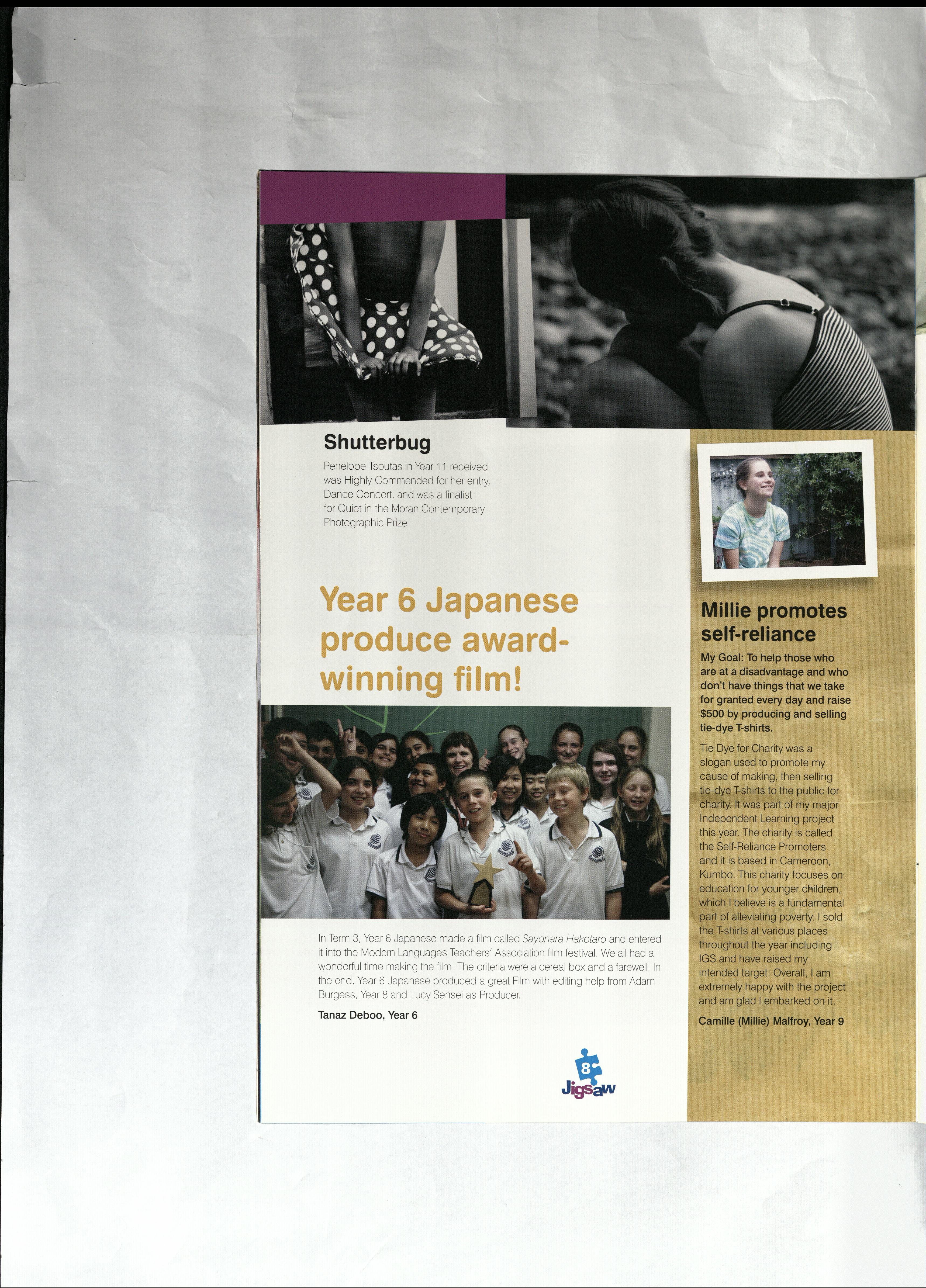
In Term 3, Year 6 Japanese made a film called Sayonara Hakotaro and entered it into the Modern Languages Teachers' Association film festival. We all had a wonderful time making the film. The criteria were a cereal box and a farewell. In the end, Year 6 Japanese produced a great Film with editing help from Adam Burgess, Year 8 and Lucy Sensei as Producer.
Tanaz Debao , Year 6
My Goal: To help those who are at a disadvantage and who don't have things that we take for granted every day and raise $500 by producing and selling tie-dye T-shirts.
Tie Dye for Charity was a slogan used to promote my cause of making , then selling ye T-shirts to the public for harity It was part of my major Independent Learning project this year The charity is called the Self-Reliance Promoters and it is based in Cameroon , Kumbo This charity focuses on · education for younger cRild ren , which I believe is a fundament a l part of alleviating poverty. I sold the T-shirts at various places throughout the year including IGS and have ra ised my intended target Overall , I am extremely happy with the project and am glad I embarked on it
Camille (Millie) Malfroy, Year 9
We have been the Primary Community Service leaders fo r 201 0. We both enjoy helping out others who are not as lucky as we all are. Sometimes it is because they are born in towns and countries that are isolated or poor, other times it is because a natural disaster has occurred and sadly, at othe r times, it is because of il lness.
Throughout the year we have done a g reat deal of community fund raising.
In Term 1 we helped the kids in Haiti overcome the resu lts of a massive earthquake, by having an Accessory Day. We were able to wear blue or red accessories, which are the colours of the Haitian Flag. We all donated a gold coin to this worthy cause.
Ou r fu ndraiser in Term 2 was a Spellathon. The aim for this Spellathon was to raise as much money as we could for the Year 10 and Year 11 students who, during the 2010 Antipodeans trip to Nepal, helped build a monastery.
In Term 4 we helped support Indigenous Literacy by having a Book Characte r and Book Swap day. IGS believes that all children should be

literate. We were able to bring in a book for the swap and on Friday 15 October we dressed up as a book character and held a Book Swap in the library. If we wanted to swap a book or dress up we donated a gold coin and all the money we raised went towards the Indigenous Literacy Project.
On October 27 we were ab le to wear pink accessories and we all brought in a gold coin to support the McGrath Foundation.
Being a Community Service leader has been a special opportunity for both of us. It has allowed us to organise fun events for our friends at school as well as to benefit others in not only our community but people in places as far away as Haiti.
Thank you to everyone who he lped throughout the year with our fundraisers A very big thank you goes to Ms Vitel and Ms Bertoli for helping us along the way.
Christian Blanda and Katherine Anagnostopoulos, Year 6
This year we welcomed 20 students and three teachers from Noumea. The experience enabled both groups of students to improve their language skills and to learn about different cultures. Both IGS host students and Noumea students enjoyed visiting Taronga Zoo. The koalas were adored by all students and the dolphin presentation was spectacular. A special day for the exchange was
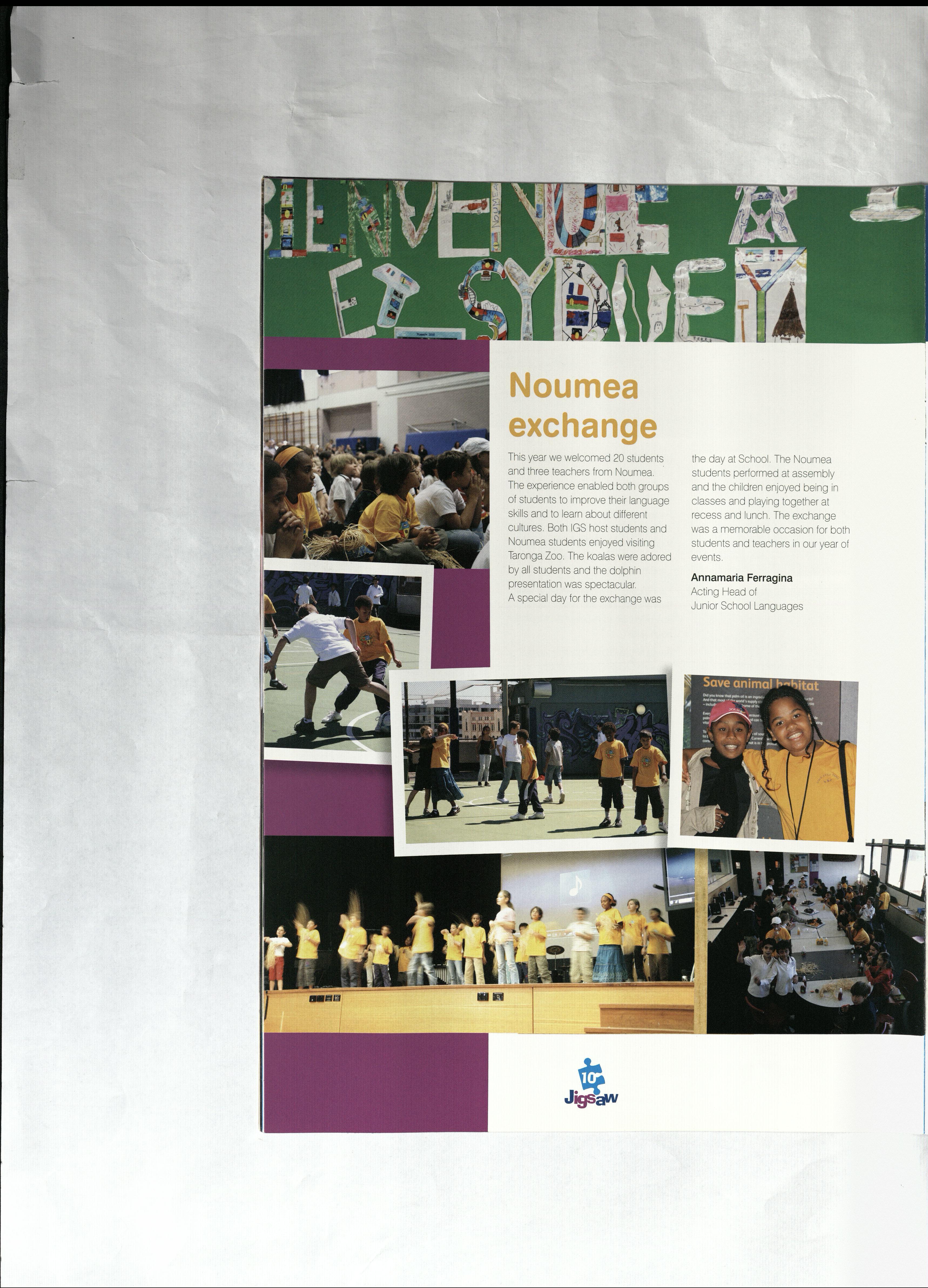
the day at School. The Noumea students performed at assembly and the children enjoyed being in classes and playing together at recess and lunch The exchange was a memorable occasion for both students and teachers in our year of events.
Annamaria Ferragina Acting Head of Junior School Languages
What is the meaning of flower arrangements for Japanese people? Here is a brief history
Arranging flowers has been a spiritual and cultural art-"lkebana" (arranging flowers) is originally deeply related to our ancient religion, Buddhism. From the custom of offering standing flowers came decorating rooms with flowers as a part of appreciation. During the 14th-15th centuries, "Tatehana" (standing flowers specialists) were established and they formalized the base of modern Japanese floral arrangements. More free styles of arrangements were developed at that time, especially a new approach to flower arrangements by Sen-no Rikyuu (respectable Tea Master), who introduced Wabi-Style.
In 17th-18th century Edo Era, both styles were integrated. During 300 years of long period of Edo Era made the growth of rich cultural establishment to influence normal people's life. Ikebana used to be a male cultural art and then became a part of female cultural manner. During the Meiji era (19th Century), Japan was influenced by Western culture's
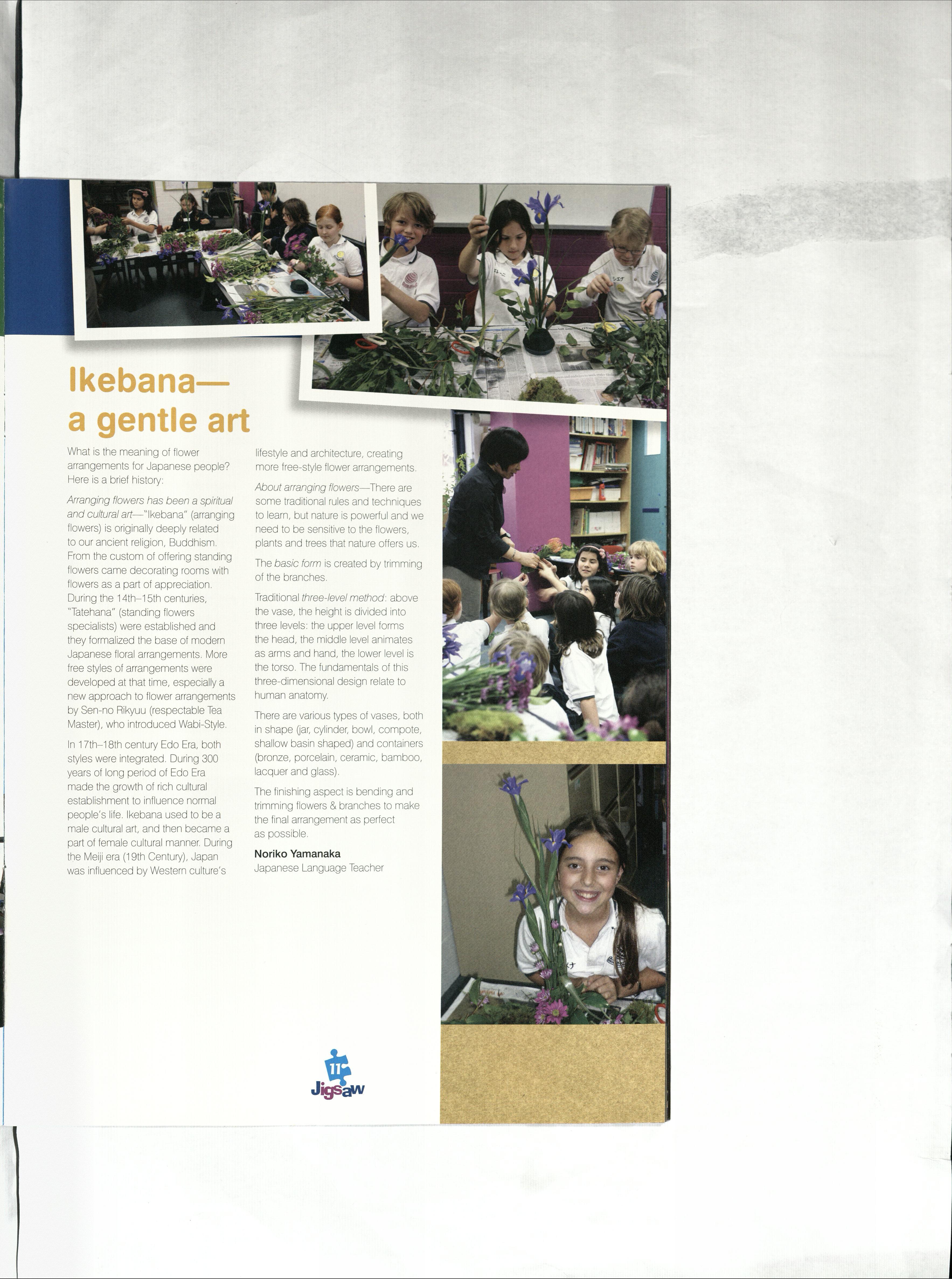
lifestyle and architecture, creating more free-style flower arrangements
About arranging flowers - There are some traditional rules and techniques to learn, but nature is powerful and we need to be sensitive to the flowers , plants and trees that nature offers us.
The basic form is created by trimming of the branches.
Traditional three-level method: above the vase, the height is divided into three levels: the upper level forms the head, the middle level animates as arms and hand, the lower level is the torso. The fundamentals of this three-dimensional design relate to human anatomy.
There are various types of vases, both in shape Gar, cylinder, bowl, compote, shallow basin shaped) and containers (bronze, porcelain, ceramic, bamboo, lacquer and glass).
The finishing aspect is bending and trimming flowers & branches to make the final arrangement as perfect as possible.
Noriko Yamanaka Japanese Language Teacher
Rebecca Jensen-Waud Head of Preschool

Friendship and Socialising : "When chi ldren have positive experiences they develop an understanding of themselves as significant and respected and feel a sense of belonging Relationships are the foundation for the construction of identity-'who am 1', 'how I belong' and 'wha t is my influence'"
Early Years Learn1ng Framework for Australia- Belonging, Being and Becoming
"Positive attitudes and competencies in literacy are essential for children's successfu l learning. The foundations for these are built in ea rly ch ildhood"
Early Years Learning Framework for Australia - Belonging, Being and Becomng
..constructfon In play, ,dE;Welops problem solving -skiNs, lmaginatton, fine motor and. self-esteem. Just look at the 1evef of -concentration and focus when they are engaged in this type of play. When c6nStruction play is decided by the child and they are able to dete(tn1ne the direction of the how to oonstruct the building, artwork, or even the game , this is real play and this is when the real learning occurs
"Physical activity and attention to motor skills provide children with the foundation for the ground independence and satisfaction in being able to do things themselves. "
Early Years Learning Framework for Australia - Belonging, Being and Becoming

Problem solving: "Children develop understandings of themselves and their world through active , hands -on investigation A supportive active learning environment encourages children ' s engagement in learning which can be recognised as deep concentration and complete focus on what captures their interests "
Early Years Learning Framework for Australia - Being , Belonging and Becoming
High School Drama in Semester 2 began with a busy International Day full of performances including Intercultural Drama tales, Commedia Dell Arte and HSC performances This was soon followed by the Drama HSC examinations which consisted of Group Performances and Individual Performances and Submitted Projects We were delighted to have one Group Performance with Matt Laga'aia, Tamika Hodgson, Samantha Roberts and Mikaela Atallah nominated for selection at OnStage at the Seymour Centre for their piece, entitled, What a Wonderful World, and to have our Video Drama, Riverstones, by Holly Greenwood also nominated for OnScreen at the

Seymour Centre. OnScreen and OnStage showcase excellence in the 2010 Drama HSC examination.
The Years 9/10 elective classes, Dramabilities and Theatricks, worked towards creating realistic characters in their scene work and monologue work. This cu minated in a wonderful showcase presented at the Stage 5 Performance Evening whe re the Drama space was filled with a receptive and delighted audience who applauded the fine work of our talented High School students.
Rita Morabito Head of Drama
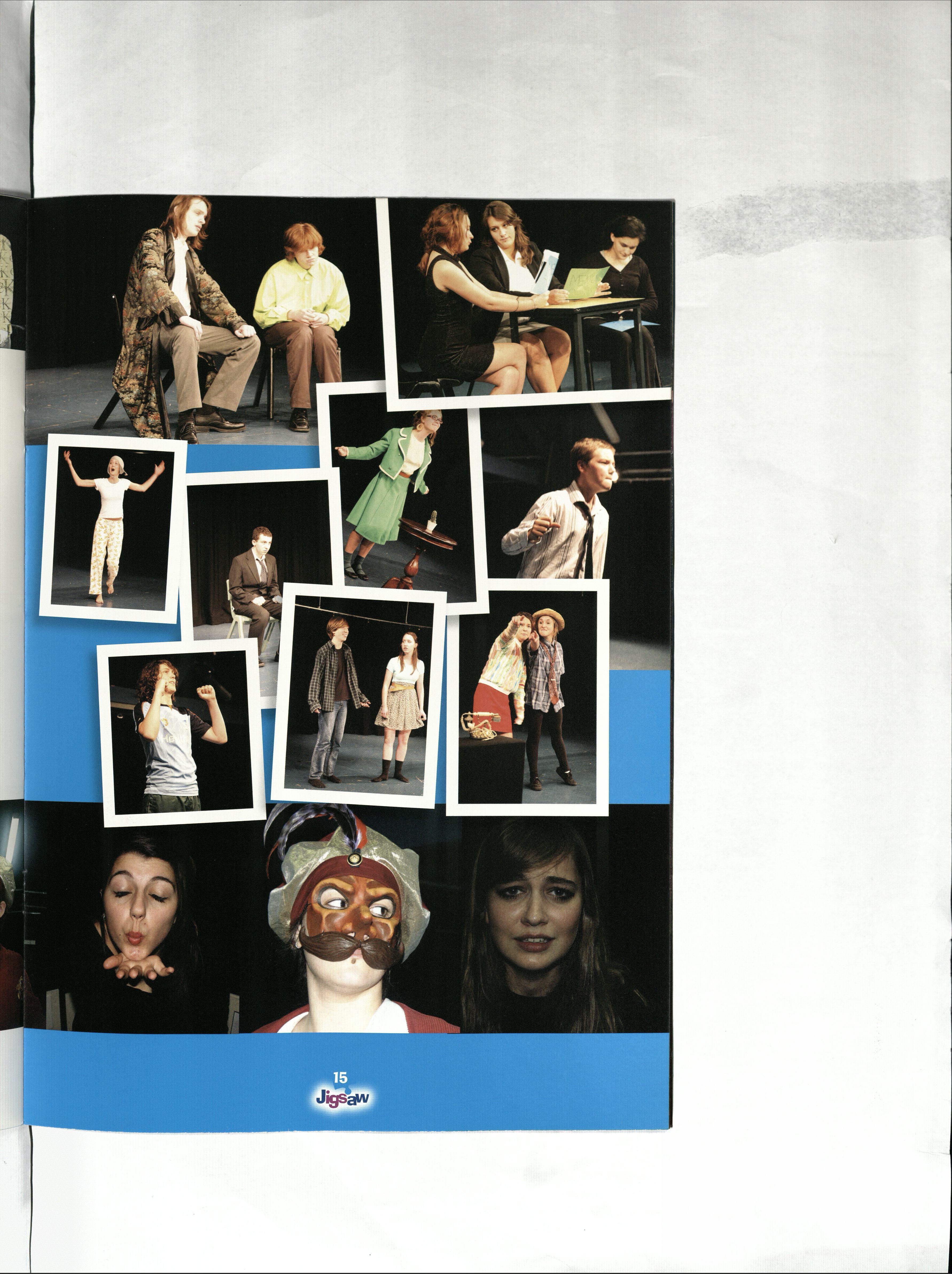

At the end of Term 4, Year 8 took part in a Collaborative Learning Project (CLP) which focused on exploring multiculturalism in Australia. For our case study we investigated Marrickville and the impact that different cultures have had throughout time. This project was carried out over three days, beginning with research and ending with us constructing a mosaic.
On the first day, we were taken to the Learning Centre and introduced to the project. We were then split into groups and asked to respond to a few questions on the Marrickville area and its history. To complete these questions and record our predictions and preconceptions, we used a blogging tool called "Moodie".
On the following day we went on an excursion to Marrickville to further research the area. We examined the architecture, people and local businesses and looked at the populations and influences of the different nationalities living in Marrickville. Using a booklet we were able to record this information
On the final day we completed an evaluation on the impact of different cultures on Marrickville, incorporating
the information we had learnt in the prev 1ous two days. We were required to go back into to Moodie and add to or change the information we had previously entered from our first day.
As we updated and posted information to Moodie, each group was able to see each other's responses and gain a deeper insight into the findings of all the groups.
As a part of the final day we were asked to create a mosaic similar to those we had seen on the footpaths of tv'arrickville Road to characterise what cultures Marrickville may represent in the year 2030. In our groups we posted our designs to Moodie, so again each group could see each others' creative response. Then we began to make a mosaic based on the diverse culture of Marrickville in the future.
We thoroughly enjoyed this project as it gave us a chance to learn about an area and then experience it first-hand. The artistic aspect was something also very much enjoyed by the whole year group and we loved making the mosaics.
Holly Davison and Hestea Cook, Year 8
Marrickville is home to over 100 different cultures speaking more than 70 different languages-this makes it a multicultural society Marrickvli/e is constantly trying to open its doors to new cultures bringtng new traditions, festivals, shops, food, art and environments to the area. There are many shop owners who have worked in the area tor many years, who have seen Marrickville grow and change over the time they have been there.
When walking down the main streets, you can see the use of many languages covering shop walls, and symbols in windows as shop logos and in mosaics on the footpath celebrating Marrickville 's diversity. Each of these symbols or languages represents a larger cultural group or nationality that can be identified within the community
Marrickville is more diverse in its cultures compared to Ultimo because of Marrickville's large number of foreign people which means more foreign art, food, shops and more. Marrickville is made up of many shops held with pride by many people, whereas Ultimo is much quieter and less of a local CBD.

Marrickville smelt overwhelmingly of the foods of different cultures and nationalities. While in a Greek Deli, we were talktng to a lady who immigrated to Australia 57 years ago. We asked her about what Marrickville used to be like 10 years ago She replied by saying that 10 years ago, about 95% of residents were Greek. Currently there are many Vietnamese people immigrating to Australia and moving to Marrickville.
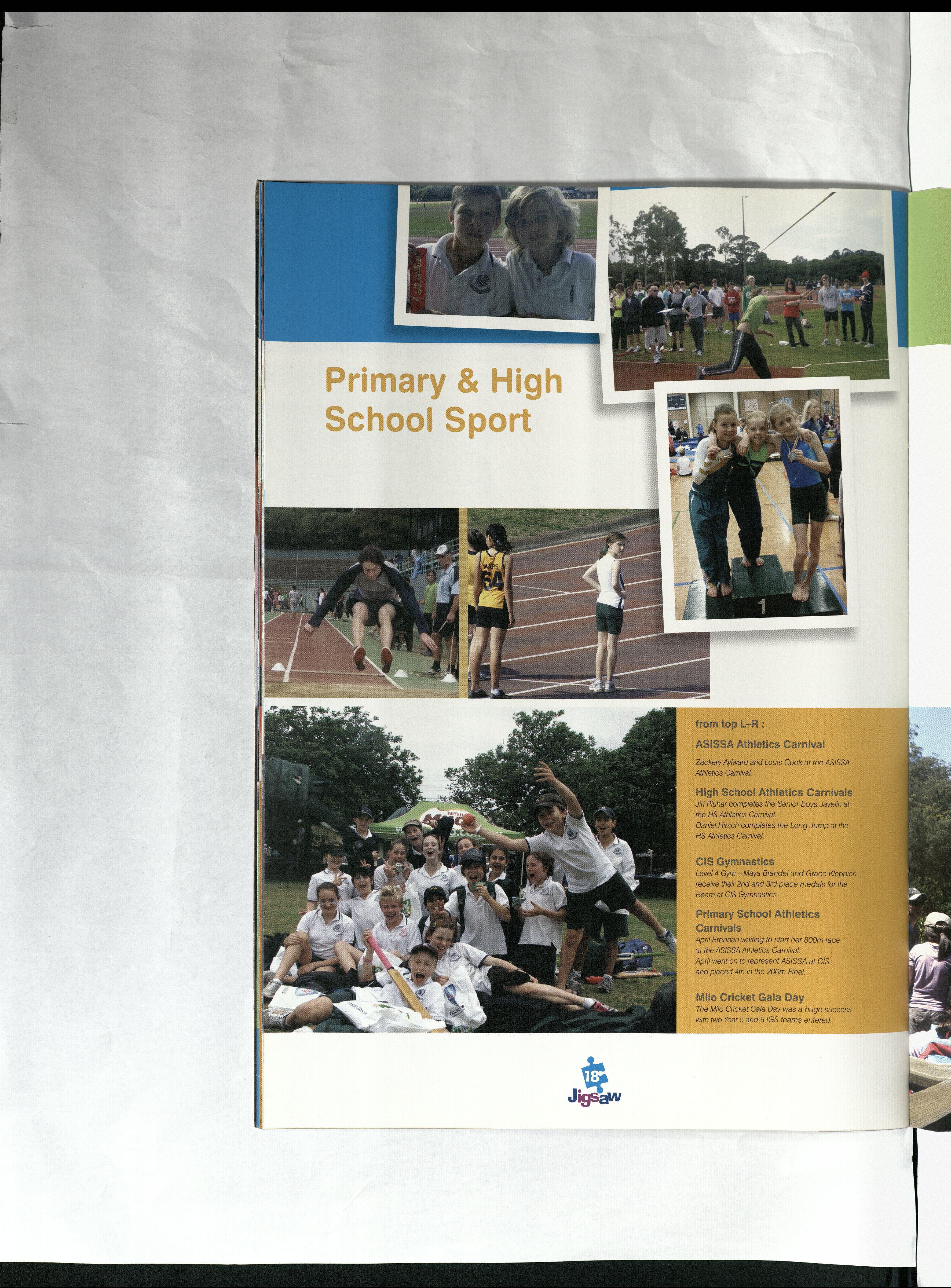
from top L-R :
ASISSA Athletics Carnival
Zackery Aylward and Louis Cook at the ASISSA Athletics Carnival.
High School Athletics Carnivals
Jiri Pluhar completes the Senior boys Javelin at the HS Athletics Carnival.
Daniel Hirsch completes the Long Jump at the HS Athletics Carnival.
CIS Gymnastics
Level 4 Gym-Maya Brandel and Grace Kleppich receive their 2nd and 3rd place medals for the Beam at CIS Gymnastics
Primary School Athletics
Carnivals
April Brennan waiting to start her BOOm race at the ASISSA Athletics Carnival.
April went on to represent ASISSA at CIS and placed 4th in the 200m Final.
Milo Cricket Gala Day
The Milo Cricket Gala Day was a huge success with two Year 5 and 6 IGS teams entered.
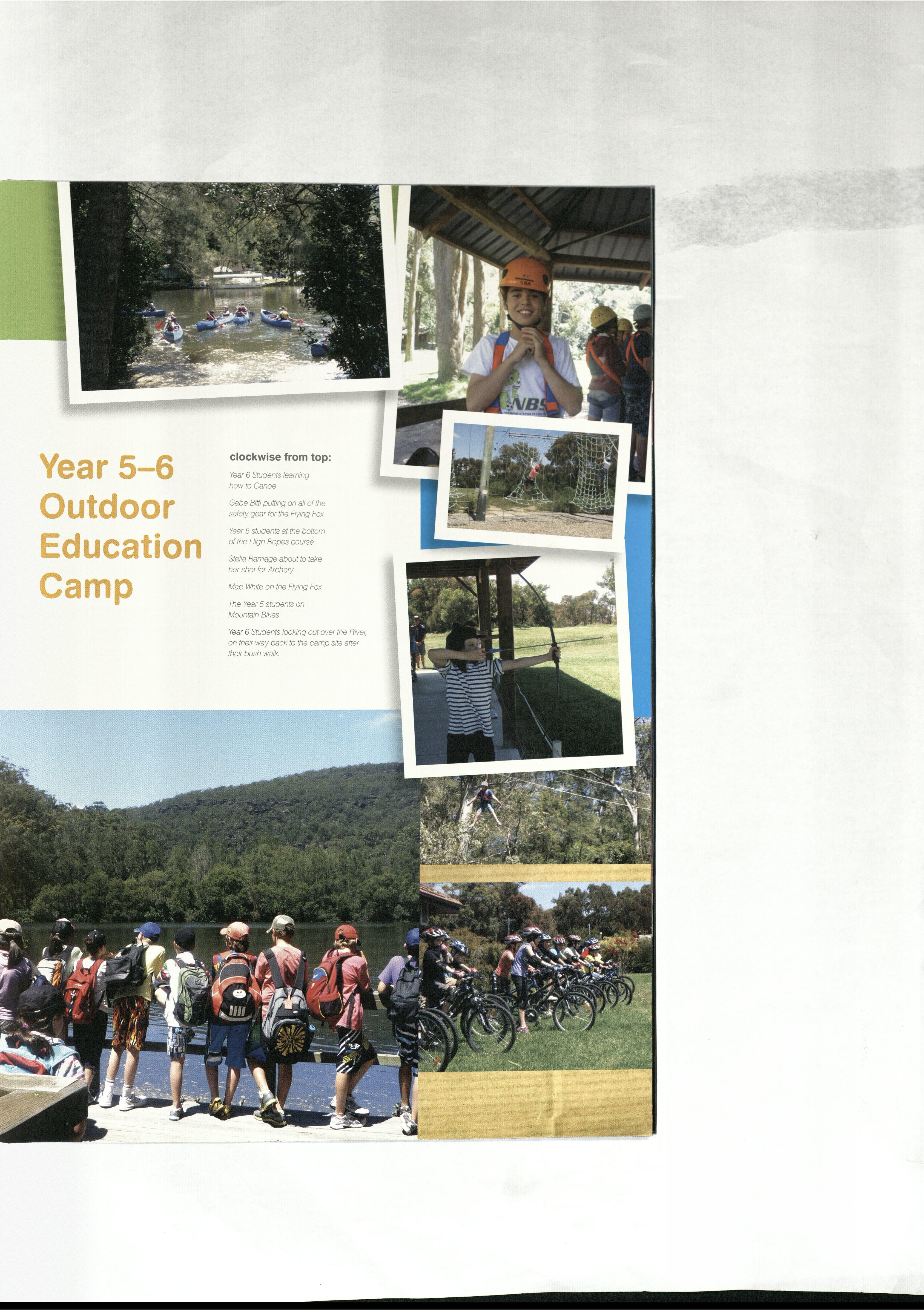
clockwise from top:
Year 6 Students learning how to Canoe
Gabe Bitti putting on all of the safety gear for the Flying Fox
Year 5 students at the bottom of the High Ropes course
Stella Ramage about to take her shot for Archery
Mac White on the Flying Fox
The Year 5 students on Mountain Bikes
Year 6 Students look1ng out over the River, on their way back to the camp site after their bush walk
If you think Junior Master Chef looks intense you should have seen 5 Gold Master Chef I There were things like chilli apples to a chocolate pot pie, each with a touch of red. The week before Master Chef we were all busily working out ingredients and who was bringing in what Mrs Weir begged at us at least 12 times a day to stop talking about our recipes.
Before we started cooking on the day Mrs Weir gave us a VERY long safety speech so that no-one did silly things like putting metal in the microwave. There were seven groups of Year 5 Gold Master Chefs. These groups were the Munchables who made chilli apples and heavenly passionfruit waffles and the Sushi Salads who made buffalo mozzarella salad, bruschetta, pavlova and lemonade; there were also the Pie Friends who made very sweet chocolate milkshakes, a mouth watering chocolate mousse and an eccentric chocolate pot pie. The next group, the Four Taste Buds made a fantastic fizzy orange and cranberry juice, delicious yoghurt with raspberries and
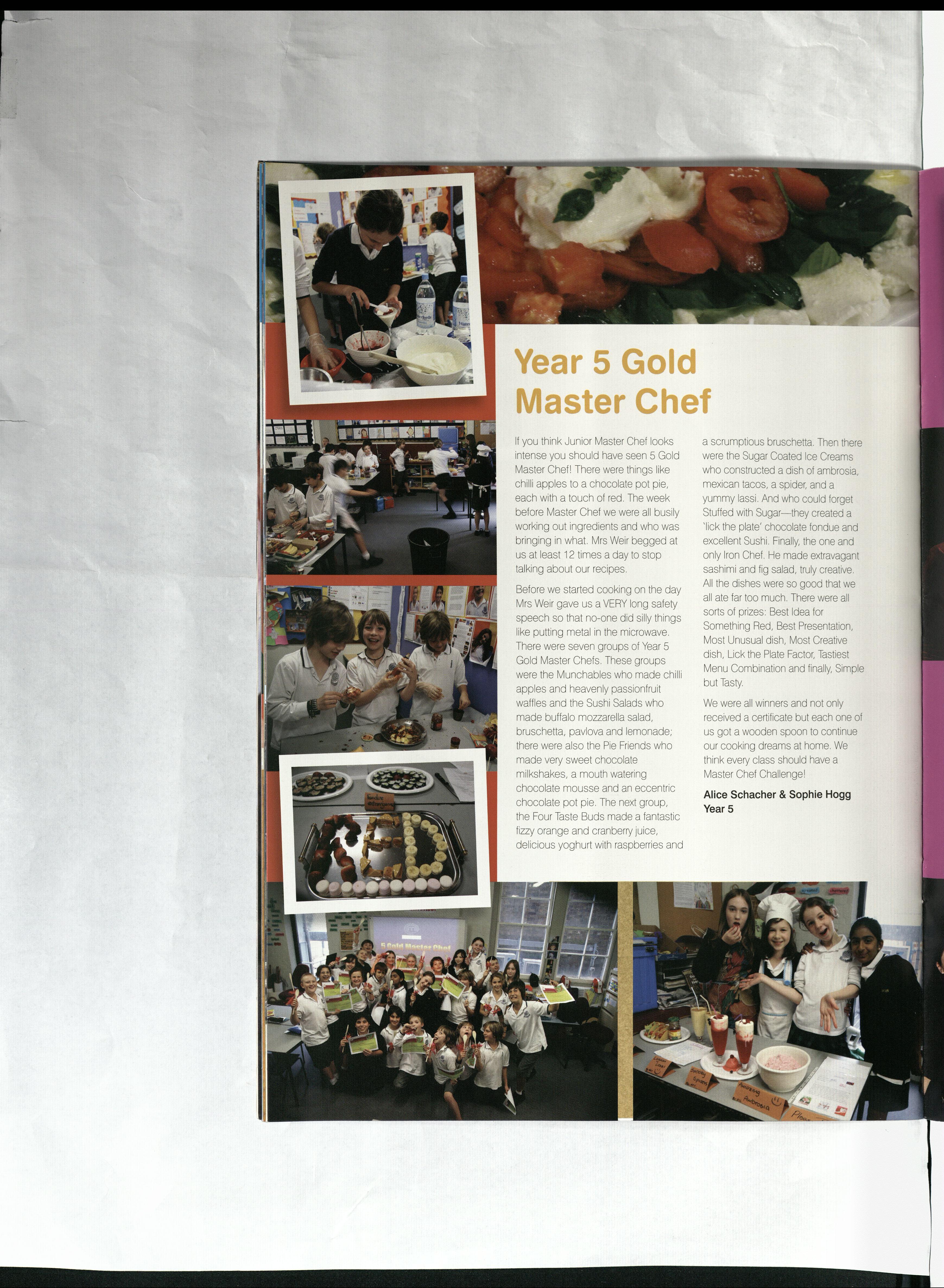
a scrumptious bruschetta. Then there were the Sugar Coated Ice Creams who constructed a dish of ambrosia, mexican tacos, a spider, and a yummy lassi. And who could forget Stuffed with Sugar-they created a 'lick the plate' chocolate fondue and excellent Sushi. Finally, the one and only Iron Chef. He made extravagant sashimi and fig salad, truly creative. All the dishes were so good that we all ate far too much. There were all sorts of prizes: Best Idea for Something Red, Best Presentation, Most Unusual dish, Most Creative dish, Lick the Plate Factor, Tastiest Menu Combination and finally, Simple but Tasty.
We were all winners and not only received a certificate but each one of us got a wooden spoon to continue our cooking dreams at home. We think every class should have a Master Chef Challenge!
Alice Schacher & Sophie Hogg Year 5
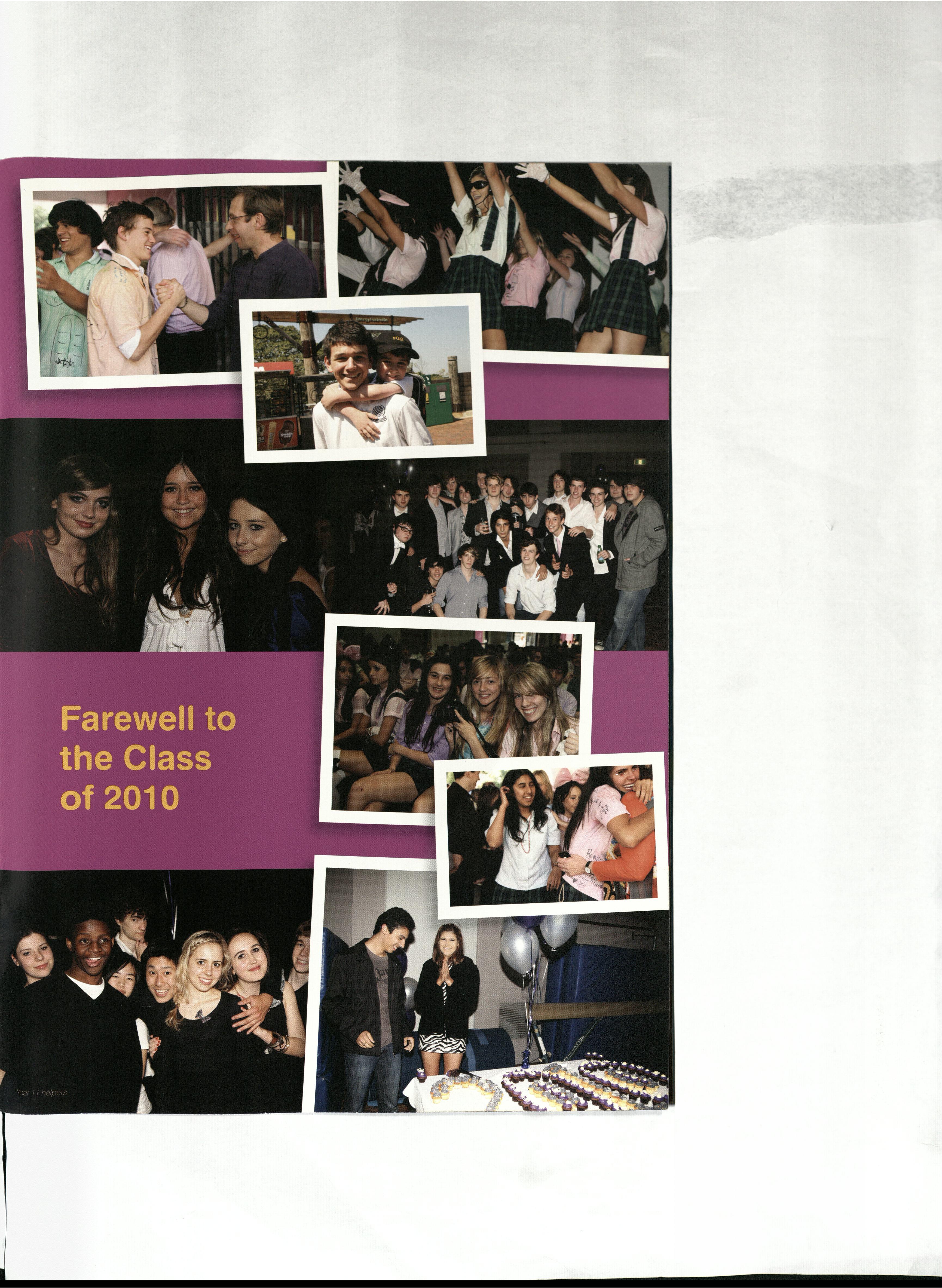
It's a big, wide world "out there" and IGS loves to send Year 12 graduates off with a host of celebrations in recognition of the years of hard work and contribution to the School and wider community.
The day started with breakfast (which, as we all know, is the only way to start the dayl) with Year 12 staff and Heads of House.
At 9 OOam the entire High School body attended a moving assembly, during which each Year 12 student was presented with his or her School portfolio A very special touch to this assembly was the reading of a letter written by Year 12 to Kindergarten after which Year 1 students presented each Year 12 Ieaver with a g1ft from the School.
Then the pace changed and the now famous "informal assembly" was held, featuring performances from Year 12 leavers and students in the younger
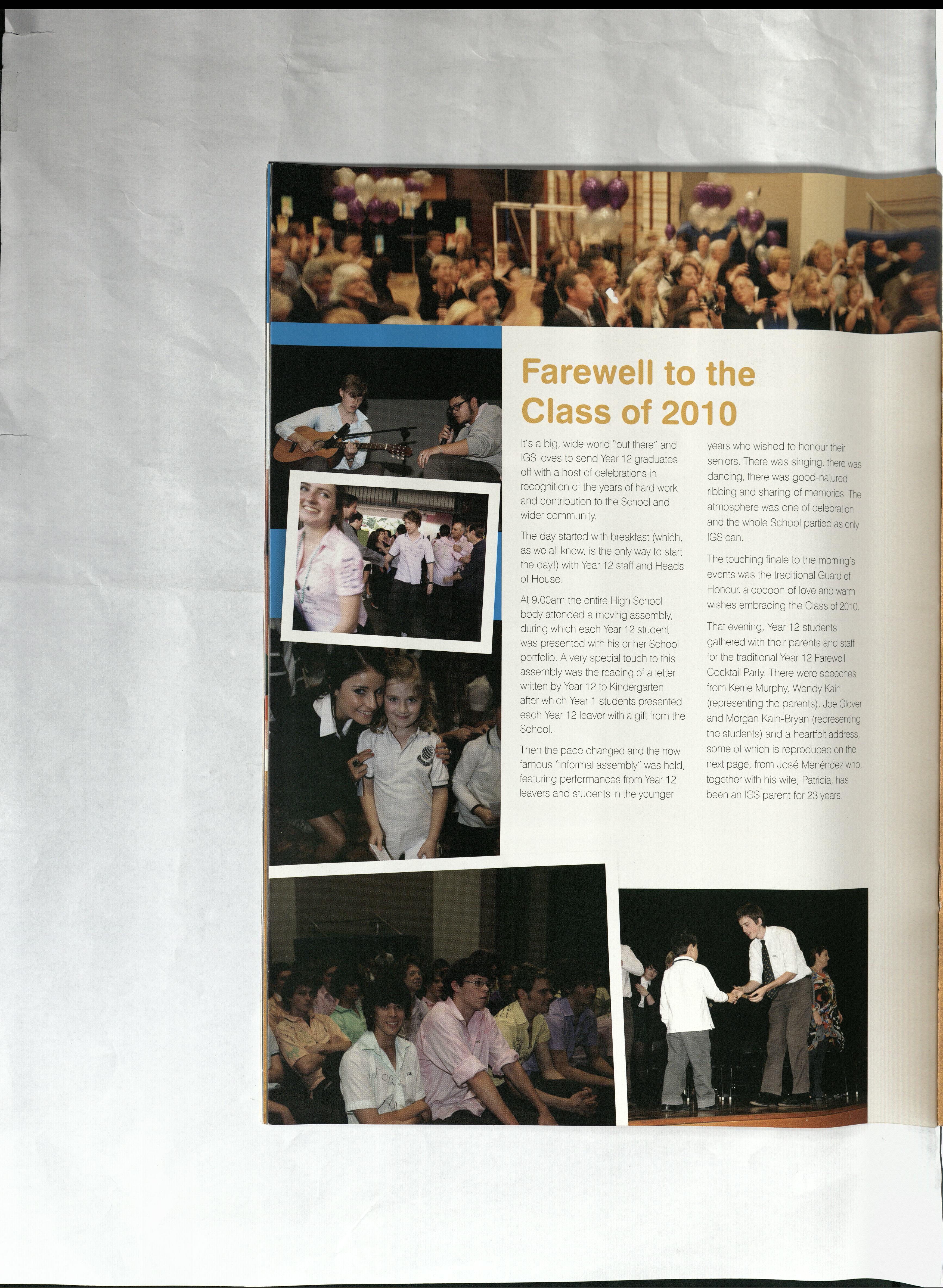
years who wished to honour their seniors. There was singing, there was dancing, there was good-natured ribbing and sharing of memories The atmosphere was one of celebration and the whole School partied as only IGS can.
The touching finale to the morning's events was the traditional Guard of Honour, a cocoon of love and warm wishes embracing the Class of 2010.
That evening, Year 12 students gathered with their parents and staff for the traditional Year 12 Farewell Cocktail Party There were speeches from Kerrie Murphy, Wendy Kain (representing the parents), Joe Glover and Morgan Kain-Bryan (representing the students) and a heartfelt address, some of which is reproduced on the next page, from Jose Menendez who, together with his wife, Patricia, has been an IGS parent for 23 years.
Above all, International Grammar Schoot has played a major role in the beauty, eduSatiOn, tolerance and magnitrcence of our chUdren. For this we are very grateful.
10 an the teachers past and present , who over the last 23 years took care of Dano and Sebastian we are extremely grateful Your professiOnalism , ethics , dedication kno>Medge and humanity is what mQI<es IGS what IGS is To all the staff of IGS , whatever your job is , our si ncere thanks You also played a very important role in the education and welfare of our children.
This is the end of a very long associatton Wltli f ntemattonar Grammar School for us As we took back to 1988 and our initial hesitations about an Old we reffect that sending Oario and $ebastian to International Grammar SChOol was the best decision we ever. took We would certainly do it all over again .

Thank you very much.
Jose Menendez and Patricia Mohr-Bell
Parents of Darro (IGS 1988-2000) and Sebastian (IGS: 1997-2010)
